
Castlevania, known in Japan as Akumajō Dracula, is a gothic horror action-adventure video game series and media franchise about Dracula, created and developed by Konami. It has been released on various platforms, from early systems to modern consoles, as well as handheld devices such as mobile phones. The franchise has expanded into several spin-off video games and other media, including comic books and an animated television series.

Castlevania: Lament of Innocence is a 2003 action-adventure game developed by Konami Computer Entertainment Tokyo and published by Konami for the PlayStation 2 console. Part of Konami's Castlevania video game series, it is the first installment of the series on the PlayStation 2 and the third to make use of a 3D style of gameplay. It was released in Japan and North America in late 2003 and Europe and Australia in early 2004.

Castlevania: Symphony of the Night is a 1997 action role-playing game developed and published by Konami for the PlayStation and Sega Saturn. It was directed and produced by Toru Hagihara, with Koji Igarashi acting as assistant director. It is a direct sequel to Castlevania: Rondo of Blood, taking place four years later. It features Dracula's dhampir son Alucard as the protagonist, rising from his slumber to explore Dracula's castle which resurfaced after Richter Belmont vanished. Its design marks a break from previous entries in the series, re-introducing the exploration, nonlinear level design, and role-playing elements first experimented with in Castlevania II: Simon's Quest.

Castlevania: Circle of the Moon, titled Castlevania in PAL regions, is a 2001 action role-playing game created by Konami for the Game Boy Advance. Published as a launch title in 2001, Circle of the Moon is part of Konami's Castlevania video game series, the premise of which centers on the eternal conflict between the vampire hunters of the Belmont clan and the vampire Dracula. The game sold one million copies worldwide and was acclaimed by critics. The events of its plot were retconned by former Castlevania producer Koji Igarashi, a move which was met with some criticism.

Castlevania: Dawn of Sorrow is a 2005 action role-playing game developed and published by Konami. It is part of Konami's Castlevania video game series and the first Castlevania game released on the Nintendo DS. The game is the sequel to Castlevania: Aria of Sorrow and incorporates many elements from its predecessor. Dawn of Sorrow was commercially successful. It sold more than 15,000 units in its first week in Japan and 164,000 units in the United States during the three months after its initial release.
Ska Studios is an independent game development studio founded by James Silva in 2007 after winning a contract to publish The Dishwasher: Dead Samurai to Xbox Live Arcade. Ska Studios has released four Metacritic-aggregated console games since then, more than any similarly sized studio. Ska Studios currently consists of James Silva.
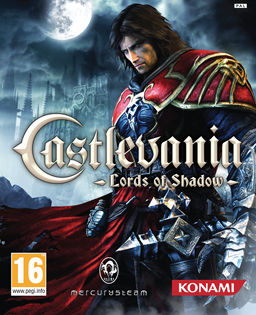
Castlevania: Lords of Shadow is a 2010 action-adventure game developed by MercurySteam with supervision from Hideo Kojima, and published by Konami. It was released on October 5, 2010, for the PlayStation 3 and Xbox 360, with a PC version released on August 27, 2013. The game is a reboot of the Castlevania series. Set in Southern Europe during the Middle Ages, the story focuses on Gabriel Belmont and his quest to defeat a malevolent order known as the Lords of Shadow and resurrect his wife. The player controls Gabriel in 3D environments as he uses melee skills to defeat enemies and solves puzzles to move through the game.
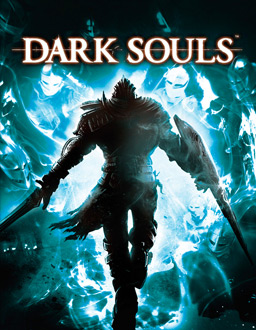
Dark Souls is a 2011 action role-playing game developed by FromSoftware and published by Namco Bandai Games. A spiritual successor to FromSoftware's Demon's Souls, the game is the first in the Dark Souls series. The game takes place in the kingdom of Lordran, where players assume the role of a cursed undead character who begins a pilgrimage to discover the fate of their kind. A port for Windows featuring additional content, known as the Prepare to Die Edition, was released in August 2012. It was also released for consoles under the subtitle Artorias of the Abyss in October 2012.

Castlevania: Lords of Shadow 2 is a 2014 action-adventure game developed by MercurySteam and published by Konami. It is a sequel to the 2010 title Castlevania: Lords of Shadow, which served as a reboot of the Castlevania franchise. The game was released late February 2014 in both North America and Europe and in March 2014 in Australia. Lords of Shadow 2 was released on September 4, 2014, in Japan. A downloadable chapter has also been released in March from the same year.

Rogue Legacy is a 2013 platform game with roguelike elements developed and published by Cellar Door Games. The game was released for Microsoft Windows, Linux, OS X, PlayStation 3, PlayStation 4, PlayStation Vita, Xbox One, Nintendo Switch, and iOS. A sequel, Rogue Legacy 2, was released on April 28, 2022 for Microsoft Windows, Xbox Series X/S and Xbox One.
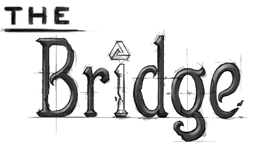
The Bridge is a 2013 video game designed by American developer Ty Taylor for Microsoft Windows, Linux, OS X, Amazon Fire TV, Android, Xbox 360, Xbox One, Ouya, PlayStation 3, PlayStation 4, PlayStation Vita, Wii U, and Nintendo Switch. It was developed by The Quantum Astrophysicists Guild. The player controls an Escher-like character and the rotation of the 2D environment, which affects gravity based on the changing orientation of the landscape.

Apotheon is a platform game developed and published by Alientrap for Microsoft Windows, OS X, Linux, and PlayStation 4. The game was released on Microsoft Windows and PlayStation 4 on February 3, 2015 and on OS X and Linux on February 10, 2015. Apotheon is Alientrap's second commercial game and utilizes a unique art style based on ancient Greek pottery, particularly in the black-figure pottery style.
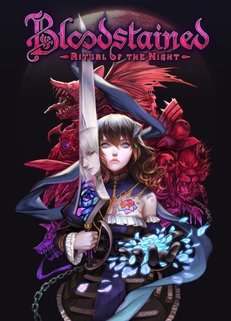
Bloodstained: Ritual of the Night is a 2019 action role-playing game developed by Japanese indie studio ArtPlay and published by 505 Games. The game's development was led by former Castlevania series producer Koji Igarashi and is considered a spiritual successor to the series. The game was released for PlayStation 4, Windows, Xbox One, and Nintendo Switch, in June 2019, for Amazon Luna in October 2020, for Android and iOS in December 2020, and for Stadia in July 2021.

God Wars: Future Past is a tactical role-playing game developed by Kadokawa Games, and published by NIS America outside of Japan. The original version of the game was released in June 2017 for the PS4 and PS Vita. An expanded version of the game, God Wars: The Complete Legend, was released worldwide on the Nintendo Switch on September 4, 2018. The expanded version was also released on PS4 and PS Vita exclusively in Japan.
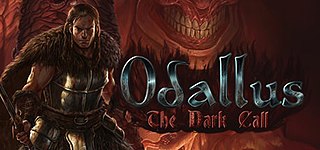
Odallus: The Dark Call is a 2015 action-adventure platform game in the vein of Castlevania III: Dracula's Curse, developed by Brazilian indie studio Joymasher. The game was originally released for Microsoft Windows, and was later released for Nintendo Switch, Xbox One, and PlayStation 4.

Bloodstained: Curse of the Moon is a 2018 platform game developed and published by Inti Creates. It is a companion title to developer ArtPlay's 2019 game Bloodstained: Ritual of the Night and was conceived to fulfill the promise for a retro-style accompaniment to Ritual of the Night after its Kickstarter campaign exceeded crowdfunding goals. Curse of the Moon follows Zangetsu, a cursed swordsman hunting down demons for revenge, as well as three other playable characters named Miriam, Alfred and Gebel. It features an 8-bit aesthetic and gameplay style similar to Castlevania games on the Nintendo Entertainment System (NES), particularly Castlevania III: Dracula's Curse (1989).
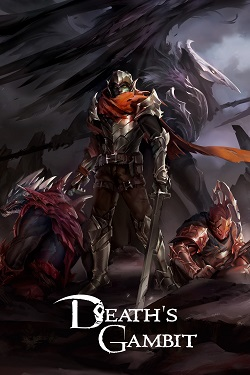
Death's Gambit is a side-scrolling action role-playing game developed by White Rabbit and published by Adult Swim Games. It was released for Windows and PlayStation 4 in August 2018. An expanded edition of the game titled Death’s Gambit: Afterlife released in September 2021 for Windows and Nintendo Switch, in November 2021 for PlayStation 4 and in May 2022 for Xbox One.
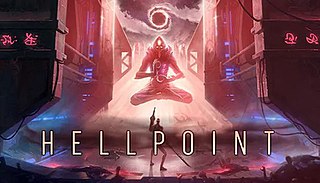
Hellpoint is a 2020 action role-playing game developed by Cradle Games and published by tinyBuild. It released for Windows, Linux, MacOS, PlayStation 4, and Xbox One on July 30. The player takes on the role of a nameless humanoid stranded on derelict space station Irid Novo, and must battle vicious creatures in order to solve the mystery behind the events that happened there. Irid Novo orbits a massive black hole; the station's position in relation to the black hole affects the strength of enemies. Versions for Stadia and Nintendo Switch were released in February 2021, with PlayStation 5 and Xbox Series X/S versions released in July 2022.

Bloodstained: Curse of the Moon 2 is a platform video game developed and published by Inti Creates. It was released for Nintendo Switch, PlayStation 4, Windows, and Xbox One, on July 10, 2020. It is the third game in the Bloodstained series and a direct sequel to Bloodstained: Curse of the Moon, itself a spin-off of Bloodstained: Ritual of the Night. The game's graphics and gameplay are done in an 8-bit retro style meant to mimic the early Castlevania games.
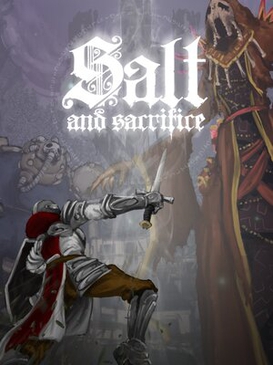
Salt and Sacrifice is an action role-playing video game developed and published by Ska Studios. As the sequel to Salt and Sanctuary, the game was released on May 10, 2022, for PlayStation 4, PlayStation 5, and Windows.



















